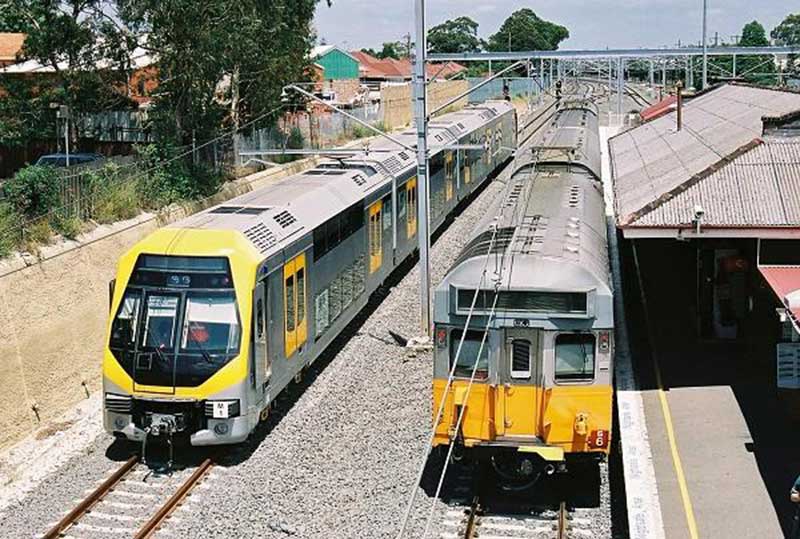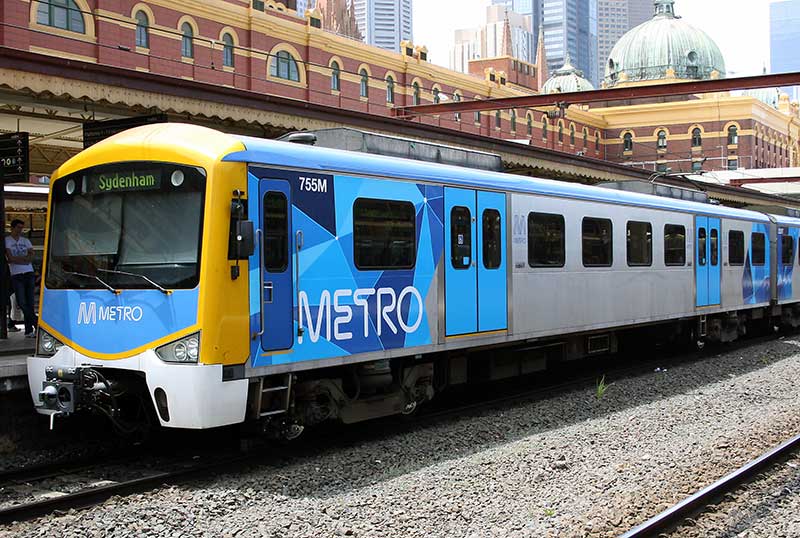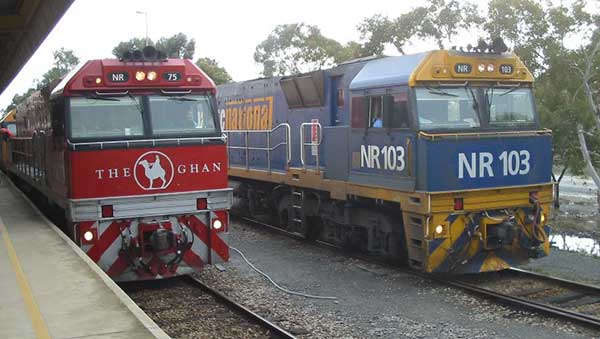Muliple Unit Passenger Trains

Just as railbuses replaced steam trains on many railway passenger services in the 1920s, so have railbuses been replaced by modern light DMU (Diesel Multiple Unit) and EMU (Electric Multiple Unit) railcar designs. Today Muliple Unit passenger trains are the standard adopted in all states, and the sight of passenger coaches being hauled by a locomotive is the exception rather than the norm. Modern diesel-electric and electric railcars, which can be run coupled as multiple units, share role and specifications with railbuses (albeit with improvements in noise, low floor design, fuel efficiency, speed and other measures) but are not referred to by the term "railbus" any longer.
Muliple unit passenger trains do not require separate locomotives, as they have engines incorporated into one or more carriages, usually under the floor. Multiple Units run in sets, usually with a driver's cab at either end and powered or non-powered coaches in between. Having a cab at both ends, there is no need to turn the train around when it reached its destination. The driver simply walks to the other end of the train and drives the train from the controls in the cab at the other end of the train.
Diesel Multiple Units (DMUs)
Diesel-powered units may be further classified by their transmission type: diesel–mechanical DMMU, diesel–hydraulic DHMU, or diesel–electric DEMU. DMUs were first introduced to Australia in the late mid-20th century for use on quiet branch lines that could not justify a locomotive hauled service. Today, DMUs are widely used throughout Australia's southern states:
Adelaide Metro use 3000 class DMUs on their suburban network.
NSW TrainLink use Xplorer DMUs on services from Sydney to Canberra (ACT), Griffith, Broken Hill, Armidale and Moree. Endeavour DMUs are used on services to Bathurst, Moss Vale and Goulburn on the Southern Highlands line, Kiama to Bomaderry and on the Hunter line. Hunter DMUs are also used on the Hunter line.
Victoria's V/Line uses Sprinter and V/Locity DMUs on all medium distance services.
Western Australia's Transwa operates the Prospector, AvonLink and Australind on medium and long distance country services.

Siemens Metro Train, Melbourne
Electric Multiple Units (EMUs)
Electric Multiple Units (EMUs) are similar to DMUs, but instead of being powered by diesel motors, they are powered by electric motors, which take their power from overhead wires. Naturally, EMUs can only run where overlead wiring is installed, and for this reason, in Australia it is common for suburban rail services to use EMUs and regional services to use DMUs, which can travel on any tracks throughout the operator's network or same-gauge tracks of other operators.
EMUs are popular on commuter and suburban rail networks around the world, including Australia, due to their fast acceleration and pollution-free operation. Being quieter than diesel multiple units (DMUs) and locomotive-hauled trains, EMUs can operate later at night and more frequently without disturbing nearby residents. In addition, tunnel design for EMU trains is simpler as no provision is needed for exhausting fumes, although retrofitting existing limited-clearance tunnels to accommodate the extra equipment needed to transmit electric power to the train can be difficult.
The cars that form a complete EMU set can usually be separated by function into four types: power car, motor car, driving car, and trailer car. Each car can have more than one function, such as a motor-driving car or power-driving car.
A power car carries the necessary equipment to draw power from the electrified infrastructure, such as pickup shoes for third rail systems and pantographs for overhead systems, and transformers.
Motor cars carry the traction motors to move the train, and are often combined with the power car to avoid high-voltage inter-car connections.
Driving cars are similar to a cab car, containing a driver's cab for controlling the train. An EMU will usually have two driving cars at its outer ends.
Trailer cars are any cars (sometimes semi-permanently coupled) that carry little or no traction or power related equipment, and are similar to passenger cars in a locomotive-hauled train.
Many modern 2-car EMU sets are set up as twin or "married pair" units. While both units in a married pair are typically driving motors, the ancillary equipment (air compressor and tanks, batteries and charging equipment, traction power and control equipment, etc.) are shared between the two cars in the set. Since neither car can operate without its "partner", such sets are permanently coupled and can only be split at maintenance facilities. Non-powered carriages can be added to the set by placing them between the end units.
Advantages of married pair units include weight and cost savings over single-unit cars (due to halving the ancillary equipment required per set) while allowing all cars to be powered, unlike a motor-trailer combination. Each car has only one control cab, located at the outer end of the pair, saving space and expense over a cab at both ends of each car. Disadvantages include a loss of operational flexibility, as trains must be multiples of two cars, and a failure on a single car could force removing both it and its partner from service.
Brisbane, Sydney and Melbourne operate EMU sets across their suburban passenger networks.











